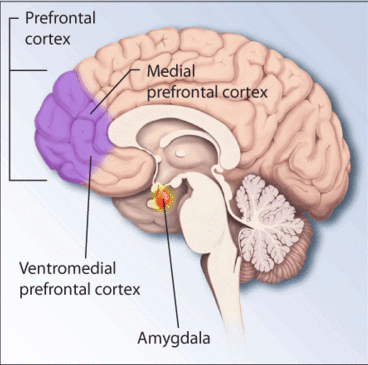A phobia is an unrealistic and excessive fear of a specific object or situation that impedes daily functioning. The fear towards whatever object or situation must be unrealistic and obsessive to the point where the individual avoids all contact or goes through it with significant amounts of pain and dread in order to be diagnosed.
If the phobia cannot be avoided entirely, the sufferer will endure the situation or object with marked distress. The terms distress and impairment as defined by the DSM-IV-TR should also take into account the context of the sufferer’s environment if attempting a diagnoses.¹
Phobias are typically classified into three categories. The DSM-IV lists these three subtypes of anxiety disorder as Agoraphobia Without History of Panic Disorder, Specific Phobia and Social Phobia.²

Agoraphobia is an anxiety disorder characterized by anxiety in situations or places where there is a chance of having a panic attack that people may witness and getting away rapidly may be difficult.
Specific phobias are fears of very specific panic triggers. Ex., arachnophobia.
Social phobia is characterized by intense fear in social situations, causing significant distress and impaired ability to function in parts of daily life. Social phobia can be subdivided into generalized social phobia (aka social anxiety disorder) and specific social phobia, in which anxiety is triggered only by very specific social situations.

The neurobiology of panic disorders is of particular interests to many psychologists. The insular cortex of the limbic system, along with cingulate gyrus, hippocampus and corpus callosum has been found to play a role in emotional processing. The anterior cingulate cortex and the medial prefrontal cortex are found to be involved in the development of phobias and fear. The prefrontal cortex is responsible for long term extinction of fear, so scientists are interested in the effects of stimulating this area and its role in inhibiting the amygdala.
Types of therapy that have proved useful in treating phobic disorder are systematic desensitization therapy, cognitive behavioural therapy (CBT), eye movement desensitization reprocessing (EMDR) and different inhibiting antidepressants such as SSRIs and MAOIs.
² This diagram of the human brain highlights the areas thought it be involved in fear and phobias.
References:
1. APA (e.g. 2011). APA Diagnostic Classification DSM-IV-TR. [ONLINE] Available at: APA Diagnostic Classification DSM-IV-TR. [Last Accessed 5.12.2013].
© BrainMass Inc. brainmass.com April 19, 2024, 12:24 am ad1c9bdddf